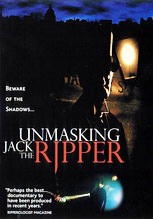A LEWD AND MYSTERIOUS FIGURE
The Church of St Mary and St David, Kilpeck, Herefordshire
Kilpeck church is a peaceful little building dating from the 12th century.
Its crowning glory is a south doorway around which a stunning array of Pagan and Christian motifs bear testimony to the humour and skills of the craftsmen, who created them almost a thousand years ago.
The most controversial and enigmatic of these is the Sheela-Na-Gig.
The name Sheela-Na-Gig is a collective one, used to describe over a hundred such carvings found predominantly on churches - but also on other important buildings - all over England and Ireland. They depict naked females, posed in a manner that displays and emphasises their genitalia.
Sheela-Na-Gig is of Irish origin and is possibly derived from a common Gaelic expression meaning an immodest woman. She has been variously described as a device to ward of evil spirits; a sexual stimulant; an obscene old hag; a fertility symbol; or a depiction of the Mother Goddess.
There is a common consensus that the Sheela-Na-Gig was a Christian invention, which incorporated Celtic symbolism. Certainly, the almost triangular head and the huge round eyes are reminiscent of early Celtic art.
It has been suggested that the medieval church may have allowed a powerful pre-Christian figure to co-exist with its own imagery, or even that it adopted this exhibitionist female as a means of warning against the sins of the flesh.
Another widely held belief, particularly in Ireland, maintains that she is a fertility symbol.
Yet, although her wide-open legs and exaggerated vulva, imply fertility there is a strange paradox in that the upper half of the figure is either shown as being childishly flat-chested, or else having long drooping breasts suggesting extreme old age. In other words, she could be taken as symbol of both fertility and infertility.
The truth is, we will never know for sure, why bygone craftsmen chose to adorn so many sacred buildings with overtly pagan and seemingly obscene imagery.
Perhaps our desire to believe in ancient symbolism has blinded us to what may have been nothing more than a bawdy joke, carved for the amusement of his workmates, by a long forgotten craftsman.







